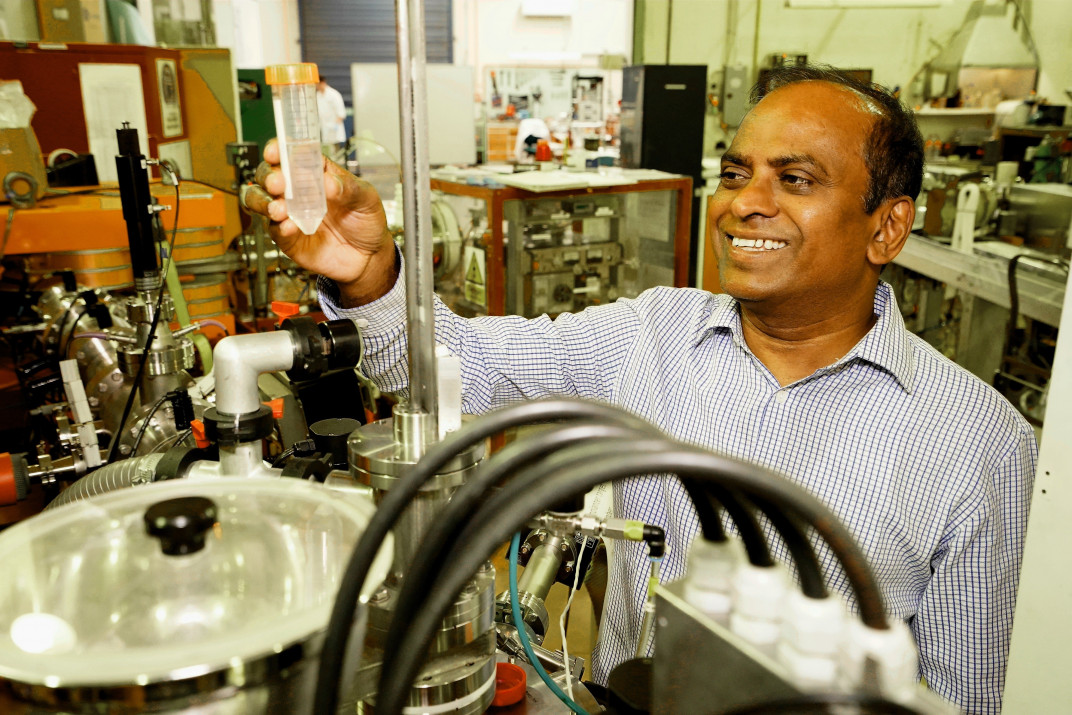Energy transition in Aotearoa New Zealand
The fourth event in 2025's Parliamentary Science Forum was held on 14 Haratua May, focusing on opportunities for energy transition in Aotearoa New Zealand. Dr John Kennedy FRSNZ spoke about the role of green hydrogen and Professor Justin Hodgkiss FRSNZ spoke about the next generation of solar photovoltaic technology.
The (realistic) role of green hydrogen in New Zealand’s future
Dr John Kennedy FRSNZ, GNS Science

Dr John Kennedy
Dr John Kennedy outlined how green hydrogen can play a crucial and tangible role in decarbonising New Zealand’s economy.
He began by addressing common misconceptions. While hydrogen isn’t a silver bullet, it is a vital energy carrier, especially for sectors that are difficult to electrify. In a country like New Zealand, blessed with abundant renewable resources, hydrogen extends the reach of clean energy into areas where the electricity grid can’t easily supply power.
Currently, green hydrogen costs around $13–17 per kilogram in New Zealand, whereas grey hydrogen, produced from fossil fuels, dominates the global market and emits about 10kg of CO₂ per kilogram produced. International forecasts suggest green hydrogen costs could drop to $2–3/kg by 2030, but only in places with very cheap renewable electricity. For New Zealand to achieve this, it must lower both the energy intensity of hydrogen production and electricity costs.
Produced through electrolysis powered by renewable energy, green hydrogen emits only water and oxygen, making it a truly zero-carbon fuel. It is especially well suited to heavy transport, aviation, off-grid power, and industrial heat processes above 400°C. These are areas where direct electrification is challenging or inefficient, and therefore they are very limited in ways to decarbonise. Dr Kennedy highlighted practical examples of local leadership, like New Zealand Post’s hydrogen trucks and Air New Zealand, Hiringa, Fabrum, and Christchurch Airport’s role in the Hydrogen Aviation Consortium.
Another big opportunity for New Zealand is green ammonia, and green fertiliser, produced using green hydrogen. New Zealand currently imports over 300,000 tonnes of nitrogen fertiliser each year, mostly made with grey hydrogen. GNS Science is investigating green ammonia production domestically, which could slash emissions and open new export markets.
Dr Kennedy detailed other cutting-edge research underway at GNS Science aimed at reducing costs and improving efficiency. This includes developing new electrocatalysts with fewer rare metals, designing smarter electrolysers, exploring plasma-mediated water splitting, and even exploring natural hydrogen reserves. One standout innovation, PowerMatch, is a control system that can cut electrolyser energy use by up to 20% while extending equipment lifespan.
For these innovations to reach the market, Dr Kennedy emphasised the importance of a collaborative approach where science is co-designed with industry and commercial users. He highlighted how New Zealand’s growing hydrogen economy needs support dedicated to pilot projects, pre-commercial innovation and early deployment.
The message was clear:
New Zealand has the science, the renewable energy, and the industrial demand – what we need now is policy alignment and strategic investment to make the most of a major economic opportunity.
Dr Kennedy concluded with a powerful call to action:
If we act fast, New Zealand can be a clean energy exporter, not just an importer of clean technology. If we don’t invest now, we’ll be importing solutions instead of exporting them.
Inside the solar revolution
Professor Justin Hodgkiss FRSNZ, Te Herenga Waka — Victoria University of Wellington
Professor Justin Hodgkiss
"The history of solar photovoltaics (PV) illustrates how scientific discovery can lead to revolutionary change. What began as early research is now a rapidly expanding reality, with solar PV playing a crucial role in the global energy landscape.
At its core, a photovoltaic cell converts light directly into electricity, a phenomenon first observed almost 200 years ago. Modern silicon-based PV cells, developed significantly since the 1960s, utilise a semiconductor layer where absorbed light energy liberates electrons, generating voltage and current. Decades of fundamental research and engineering refinements brought silicon PV technology to a high level of efficiency by the 1990s.
The global uptake of solar PV has shown remarkable exponential growth in recent years. This surge is primarily driven by a dramatic, continuous fall in the installed price of PV systems. This price reduction follows a pattern observed in other manufactured goods, where costs decrease significantly with increased production volume – often referred to as Swanson's Law. This makes solar PV, alongside wind, one of the cheapest sources of electricity available today, having crossed a crucial cost-effectiveness tipping point in the last five years. This favourable pricing stimulates further demand, shifting focus towards challenges like integrating solar power into the grid and developing storage solutions.
Looking to the future, research is underway globally and in New Zealand to develop the next generation of PV technology.
Current silicon panels are rigid and heavy, limiting their application on many structures like large warehouse roofs. New technologies, such as lightweight, flexible PVs that can be printed from molecular or polymer inks, are being developed to overcome these limitations.
These materials offer potential for further cost reductions through manufacturing scale and enable solar deployment on previously unsuitable surfaces.
New Zealand research is contributing to this field, exploring the fundamental properties of these printable materials and using advanced techniques like high-throughput computational screening and AI to accelerate the discovery of even better performing materials.
Additionally, research is enhancing existing silicon technology through novel low-cost coatings designed to boost efficiency by better utilising the solar spectrum. "
